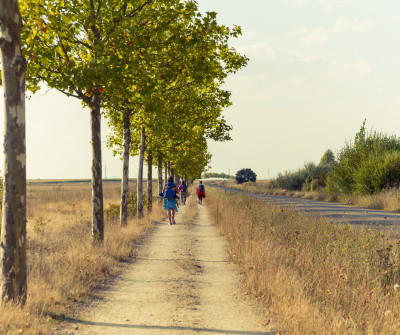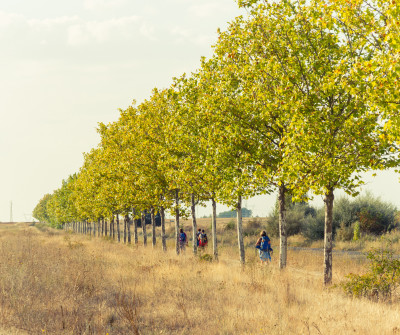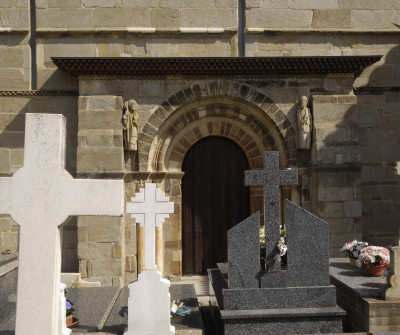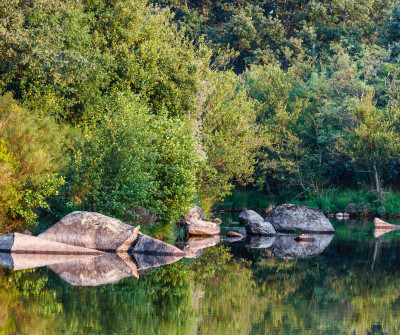Pilgrims have two options to complete this section: they can follow the traditional Way towards Bercianos, or the alternative route through the village of Villanueva de las Peras, where you can take some rest or spend the night.
You depart from the church of San Salvador, in Tábara, towards Pueblica de Valverde, with the possibility of taking a detour to the church of Santa María or continue along the shortest route.
Both paths join eventually to reach the stream of Zamarrilla.
With some ten kilometres behind you, you will have to choose: a path flanked by vineyards and chestnut trees towards Bercianos de Valverde, where you can see the church of San Pelayo with its belfry and great views; or another route marked by a stone monolith towards Villanueva de las Peras.
In both cases, you will find yourself in Santa Croya de Tera, a wine-producing village that offers all services to pilgrims, separated from Santa Marta de Tera by the river Tera. The latter village is the end of the section and you can visit the Museo del Camino Sanabrés and a Romanesque church with the oldest statue of Saint James depicted as a pilgrim. The church dates back to the 9th century and is home to what many consider to be the most important treasure of the Camino Sanabrés.
Santa Marta became an important village when the Sanabrian Way began, but when Astorga requested and obtained the relics of Saint Marta, which were in the monastery, pilgrims stopped following this route and took to the French Way. Even if it can be solitary in winter, there are more pilgrims each year choosing this route.
Tips from our postmen and women
What to see and do in the stage Tabara - Santa Marta de Tera?

“Close to the village and by the 525 national road, there is a beautiful, well-kept park by the river Tera. You can go for a walk here and relax watching the river. You can also see a beautiful fountain where you may drink or take some water with you, as it is said to be of high quality. During the autumn and spring equinoxes (at 8 solar time) you can see the so-called “miracle of light” in the Romanesque church of Santa María - a ray of light going through the rose window and lighting the capital showing Santa Marta being taken up to heaven by angels”.


 Filter
Filter


